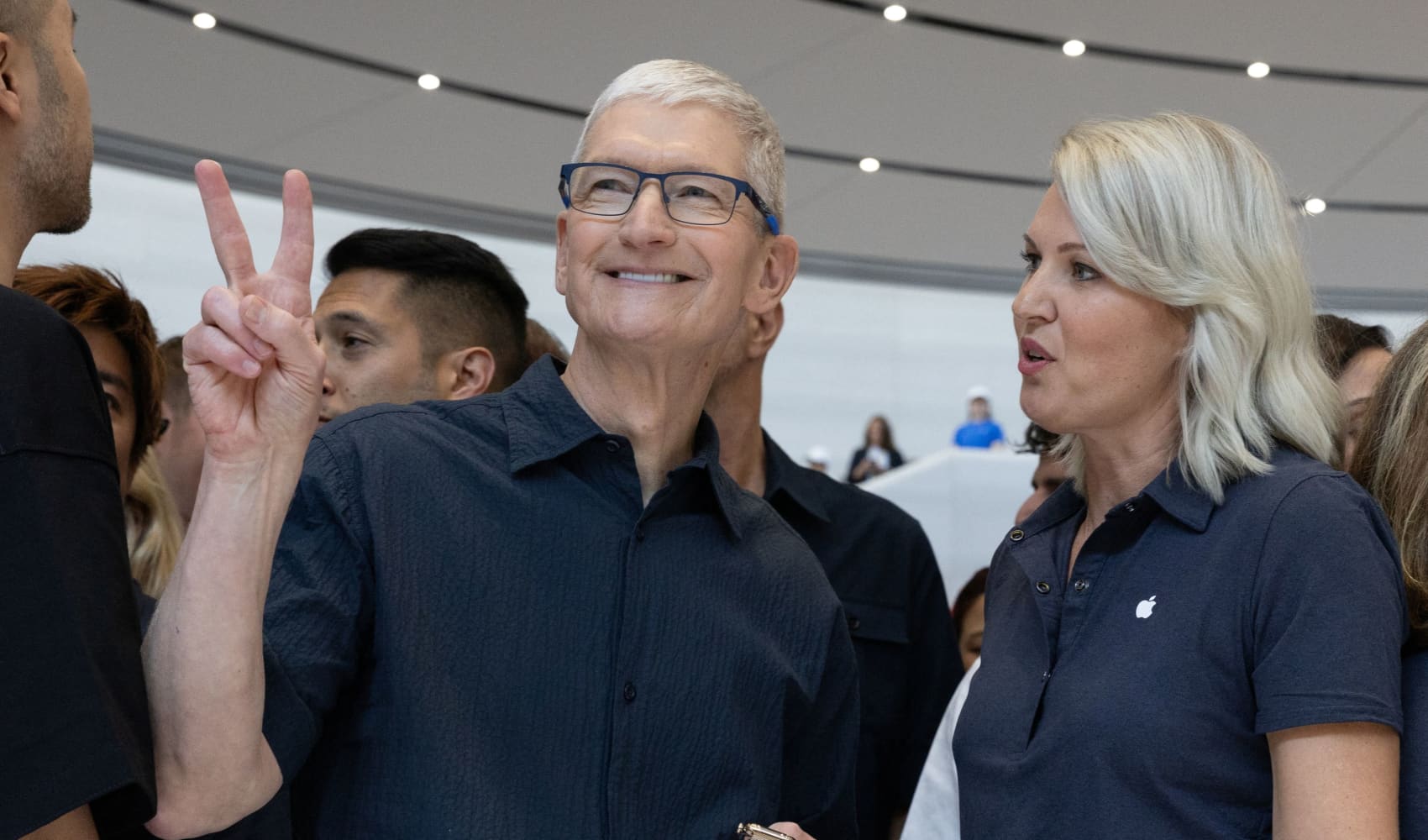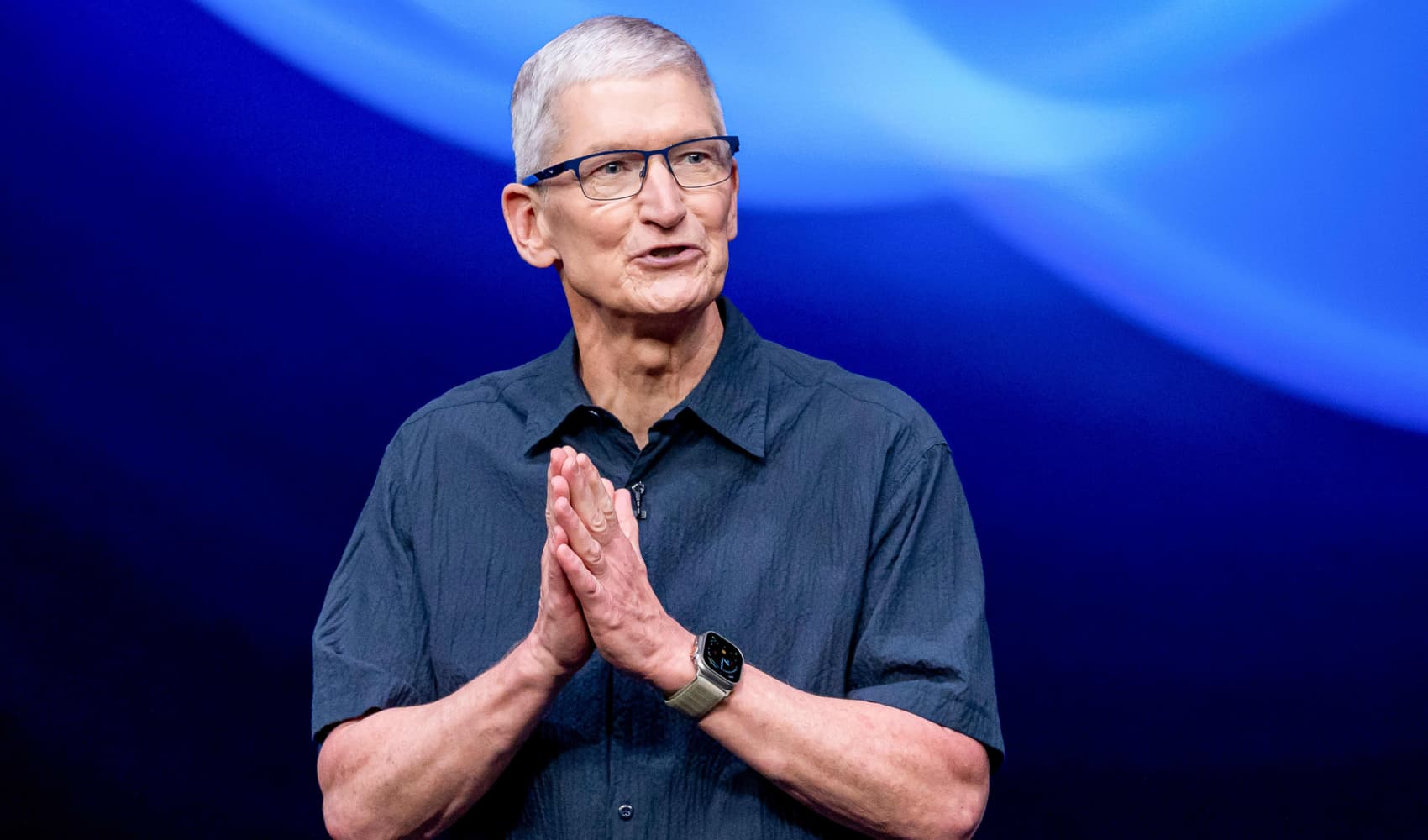Apple Tariff Crisis: What Tim Cook's Silence Means for You
Wall Street on Edge: Will Tim Cook Unveil Apple's Tariff Survival Strategy?
The Tariff Tightrope: Apple's Earnings Call Under Scrutiny
Get ready, folks, because Wall Street is practically buzzing with anticipation. Forget the usual suspects – iPhone sales figures and Mac shipment forecasts. This time, all eyes are glued to Apple's upcoming earnings call, specifically waiting to hear what CEO Tim Cook has to say about the elephant in the room: tariffs. It's like watching a high-stakes poker game, and everyone's waiting to see if Cook will bluff, fold, or play a winning hand.
Apple in the Crosshairs: A Trade War Casualty?
Apple, the tech behemoth we all know and love (or love to hate), has found itself smack-dab in the middle of President Trump’s trade war. Think of it like this: Apple is a major player in a global game of chess, and suddenly someone flipped the board. It’s not just about selling iPhones anymore; it's about navigating a complex web of tariffs, trade agreements, and potential retaliatory measures. The company is perhaps the highest-profile example of a company that’s gotten caught up in Trump’s trade war.
The Cost of Conflict: A Multi-Billion Dollar Question
So, how much is all this political maneuvering costing Apple? According to TD Cowen, the current tariffs could slice about 6% off Apple's annual earnings this year. To put that in perspective, Apple reported roughly $94 billion in profit in its fiscal 2024. That 6% translates to potentially billions of dollars! That's a lot of money to leave on the table, even for a company as massive as Apple. It begs the question: what's Cook's plan to recoup those losses?
Decoding Cook: What Wall Street is Desperate to Know
What is Wall Street looking for from Tim Cook’s commentary? Here's a breakdown:
Strategic Adjustments
Analysts want to know if Apple is considering shifting production out of China. Is Vietnam a viable option? What about India? Diversifying supply chains is a complex and expensive undertaking, but it might be necessary to mitigate tariff risks.
Pricing Strategies
Will Apple absorb the tariff costs, potentially impacting their profit margins? Or will they pass those costs onto consumers in the form of higher prices? No one wants a $2,000 iPhone, right? It's a delicate balancing act.
Negotiation Tactics
Is Apple actively lobbying the government for tariff relief? Are they engaging in back-channel negotiations? Political maneuvering can be just as important as business strategy in these situations.
Made in China: Apple's Dependence and Dilemma
Let's face it: Apple relies heavily on manufacturing in China. The country's vast infrastructure and skilled labor force have been instrumental in Apple's success. But this dependence has now become a vulnerability. Apple makes about three-quarters of its overall revenue from physical goods — iPhones, Macs and Apple Watches — mostly made in China or elsewhere in Asia... and that presents a significant problem in a tariff-heavy environment.
The Consumer Conundrum: Will We Pay More?
The big question on everyone's mind, including your's and mine, is simple: will we end up paying more for our beloved Apple products? Companies rarely absorb costs without passing some of them on to consumers. We need to wait and watch what transpires.
Beyond the iPhone: Tariffs' Ripple Effect on Apple's Ecosystem
It’s easy to focus solely on the iPhone, but tariffs impact Apple's entire ecosystem. From Macs and iPads to Apple Watches and AirPods, every device faces potential cost increases. Furthermore, tariffs can affect the price of components and accessories, creating a domino effect throughout Apple's supply chain.
Innovation Under Pressure: Will Tariffs Stifle Growth?
Innovation is the lifeblood of Apple. But what happens when tariffs squeeze profit margins and increase costs? Will Apple be forced to scale back its research and development investments? Could this lead to a slowdown in innovation? Innovation is what has made Apple what it is today, and it is unlikely they will sacrifice this.
The Competitive Landscape: How Tariffs Reshape the Playing Field
Tariffs don't just impact Apple in isolation. They also affect its competitors. Will Samsung, Google, or other tech giants be able to gain an advantage? A level playing field becomes tilted when some companies are more exposed to tariffs than others.
Geopolitical Chess: Apple's Role in Global Trade
Apple is more than just a company; it's a symbol of global trade and technological innovation. Its decisions have far-reaching consequences, impacting international relations and shaping the future of commerce. Tim Cook's comments could potentially influence trade policy and investor sentiment worldwide.
The Investor's Perspective: Navigating Uncertainty
For investors, Apple's earnings call is a crucial event. They need clarity on how the company is managing the tariff situation to make informed decisions about buying, selling, or holding Apple stock. Uncertainty breeds volatility, and investors crave stability.
Alternative Scenarios: What If Tariffs Escalate?
What if the trade war intensifies and tariffs increase even further? How would Apple respond? Could we see a significant restructuring of its supply chain? Preparing for worst-case scenarios is essential for any responsible company.
The Long Game: Apple's Future in a Tariff-Laden World
This isn't just about short-term profits. It's about Apple's long-term sustainability and its ability to maintain its position as a global leader. Can Apple adapt to a world where tariffs are the new normal?
The Tech Industry's Wake-Up Call: Beyond Apple
While Apple is a prominent example, the tariff situation is a wake-up call for the entire tech industry. Companies need to reassess their supply chains, diversify their manufacturing locations, and engage proactively with policymakers to navigate the evolving trade landscape.
Tim Cook's Legacy: Leading Through Crisis
How Tim Cook handles this challenge will undoubtedly shape his legacy as Apple's CEO. He will be remembered not just for overseeing record profits and innovative products, but also for navigating the company through a period of unprecedented geopolitical uncertainty.
Conclusion: Waiting for Thursday – Apple and the Tariff Tango
Ultimately, all eyes are on Tim Cook and Apple's Thursday earnings call. What he says, how he says it, and the strategies he unveils will have significant implications for Apple, the tech industry, and the global economy. Wall Street is holding its breath, and we're all waiting to see if Apple can successfully navigate the tariff tightrope.
Frequently Asked Questions
Here are some frequently asked questions about Apple and tariffs:
-
What exactly are tariffs, and how do they affect Apple?
Tariffs are taxes imposed on imported goods. They increase the cost of manufacturing and importing Apple products, potentially leading to higher prices for consumers or lower profit margins for the company.
-
Is Apple considering moving its manufacturing out of China?
While there's no official confirmation, it's widely speculated that Apple is exploring alternative manufacturing locations, such as Vietnam and India, to reduce its reliance on China and mitigate tariff risks. This information has not been verified.
-
How much could tariffs cost Apple in the long run?
Estimates vary, but some analysts predict that tariffs could cost Apple billions of dollars annually. The exact impact will depend on the severity of the tariffs, Apple's ability to absorb costs, and its success in diversifying its supply chain.
-
Will Apple raise prices on its products because of tariffs?
Apple has already raised prices on some products in certain markets. Whether they'll implement broader price increases remains to be seen, but it's a distinct possibility, especially if tariffs escalate.
-
What can consumers do to prepare for potential price increases on Apple products?
If you're planning to buy an Apple product, it might be wise to do so sooner rather than later, as prices could increase in the future. Consider exploring refurbished options or taking advantage of trade-in programs to save money. Waiting for older models to drop in price after new releases is another great option!




